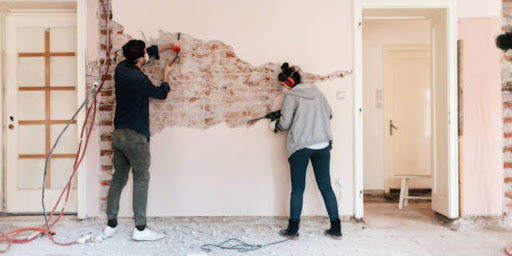Power Articles
Industry Elevating Content
Budgeting and Cost Management for Projects - Techniques for Efficient Budget Management In Home Improvement Projects

PowerArticles
Dec. 5, 2023
As home improvement companies navigate through diverse projects, the ability to efficiently allocate resources and control expenses becomes a cornerstone of their operations. This article aims to enlighten home improvement professionals on various techniques for effective budget management in their projects. From initial planning to project completion, understanding and implementing sound budgeting practices not only ensures financial prudence but also contributes to the overall success and client satisfaction of home improvement endeavors. By diving into proven strategies and practical insights, this guide seeks to empower home improvement companies with the knowledge needed to navigate the intricacies of budgeting, ultimately enhancing their ability to deliver exceptional results within financial constraints.
Initial Project Assessment
Conducting a thorough project assessment to determine scope and requirements
At the outset of any home improvement project, a comprehensive assessment is indispensable. This involves a meticulous examination of the project’s scope and requirements, ensuring a clear understanding of the client’s expectations and the intricacies of the task at hand. For home improvement companies, this initial step lays the groundwork for accurate budgeting, preventing oversights that may lead to cost overruns later in the project lifecycle.
Identifying potential challenges and risks that may affect the budget
The second facet of the initial project assessment involves proactive identification of potential challenges and risks that could impact the project budget. This anticipatory approach enables home improvement companies to devise contingency plans, fostering resilience against unforeseen circumstances that may arise during the execution of the project. By recognizing and accounting for potential risks in the budgeting process, companies can navigate uncertainties with greater agility and financial prudence.
Transitioning seamlessly from the initial project assessment, the next critical phase in effective budget management for home improvement projects is detailed cost estimation.
Detailed Cost Estimation
Breaking down the project into specific tasks and components
Detailed cost estimation is a pivotal stage where home improvement companies dissect the project into specific tasks and components. By breaking down the project into granular elements, companies gain a nuanced understanding of the resources required for each aspect, facilitating more accurate budgeting. This approach minimizes the risk of overspending on particular aspects while ensuring that all necessary components are adequately funded.
Researching and obtaining accurate cost estimates for materials and labor
Accurate cost estimation relies on precise information regarding the costs of materials and labor. Home improvement companies must conduct thorough research to obtain up-to-date and region-specific cost estimates. This diligence in gathering accurate data ensures that the budget is a realistic reflection of the actual expenses involved, preventing surprises during the project’s execution.
With a comprehensive understanding of project assessment and detailed cost estimation, the next crucial element in effective budget management for home improvement projects is contingency planning.

Contingency Planning
Allocating a contingency budget for unforeseen circumstances
Contingency planning involves the allocation of a specific budget to mitigate unforeseen circumstances. Home improvement projects are inherently susceptible to unexpected challenges, such as unforeseen structural issues or changes in client preferences. Allocating a contingency budget provides a financial cushion, allowing companies to address unexpected costs without compromising the overall project quality or timeline.
Strategies for managing and mitigating unexpected costs
Beyond allocating a contingency budget, home improvement companies must develop strategies for actively managing and mitigating unexpected costs. This proactive approach involves ongoing risk assessment, continuous communication with project stakeholders, and agile decision-making to address challenges swiftly. By embracing a dynamic approach to budget management, companies can navigate uncertainties with resilience and deliver successful home improvement projects.
Prioritizing Project Phases
In the realm of home improvement projects, the order of project phases can significantly impact budget allocation. Evaluating the order of these phases based on budget constraints is a strategic approach to optimize resource utilization. This involves a careful analysis of the project’s requirements, identifying the essential phases that must be prioritized to ensure overall project success.
Allocating resources accordingly to these prioritized phases ensures that critical tasks receive the necessary attention, minimizing the risk of overspending in less critical areas. This prioritization strategy is indispensable for home improvement companies aiming to achieve cost-effective project outcomes.

Regular Monitoring and Adjustments
Consistent budget tracking is paramount to successful budget management in home improvement projects. Implementing a robust system for monitoring the budget throughout the project lifecycle is essential. This involves real-time tracking of expenses, enabling quick identification of potential budgetary deviations.
Techniques for making timely adjustments are equally important, allowing home improvement companies to address issues promptly and avoid exceeding the allocated budget. Regular monitoring and adjustments serve as proactive measures, providing a dynamic approach to budget management that is responsive to the evolving needs and challenges of the project.
Vendor and Contractor Negotiation
Negotiating favorable rates with vendors and contractors is a skill that can significantly impact the overall project budget. Home improvement companies need to explore various tips and strategies for successful negotiation, ensuring that they secure the best possible deals without compromising on quality.
This includes understanding market rates, leveraging long-term relationships, and employing effective communication techniques. Establishing clear expectations with vendors and contractors is equally crucial to avoid budgetary discrepancies. Clearly defined terms, deliverables, and payment schedules contribute to a transparent and mutually beneficial relationship, fostering a collaborative environment that aligns with the project’s financial objectives.
Technology Integration
As home improvement companies navigate the complexities of budget management, the utilization of project management software emerges as a game-changer.
Utilizing project management software for budget tracking and analysis
Implementing advanced project management software allows for real-time tracking and analysis of budgetary components. This technology provides a centralized platform for all financial data, enabling seamless collaboration among project stakeholders. The software’s ability to generate detailed reports facilitates in-depth budget scrutiny, empowering companies to identify potential cost overruns or savings opportunities promptly.
Exploring innovative tools for accurate cost forecasting
In addition to project management software, the integration of innovative tools for accurate cost forecasting is crucial. Leveraging cutting-edge technologies such as artificial intelligence and data analytics enables home improvement companies to make informed predictions about project costs. By analyzing historical data and identifying patterns, these tools contribute to more precise budget estimates, mitigating the risk of unforeseen expenses.

Client Communication
Effective client communication is a cornerstone of successful home improvement projects, particularly when it comes to budget updates and changes.
Keeping clients informed about budget updates and changes
Transparent communication with clients regarding budget updates is essential for building trust and satisfaction. Home improvement companies should employ clear and concise communication channels, utilizing project management software to generate easy-to-understand reports for clients. Regular updates on budgetary changes, accompanied by detailed explanations, foster a collaborative and informed client-contractor relationship.
Managing client expectations and addressing concerns proactively
Proactive management of client expectations is crucial to avoid misunderstandings and dissatisfaction. Home improvement companies should establish clear communication channels for clients to express concerns or seek clarification on budget-related matters. Addressing potential issues proactively not only demonstrates a commitment to client satisfaction but also contributes to the overall success of the project.
Conclusion
In conclusion, mastering the art of budgeting and implementing effective cost management techniques is paramount for home improvement companies aiming to thrive in a competitive market. By embracing meticulous planning, regular monitoring, and adaptability to unforeseen challenges, these companies can not only meet financial targets but also exceed client expectations. Prioritizing transparency with clients regarding budget constraints and potential adjustments fosters trust and ensures a smoother project journey. Investing in technology that aids in real-time tracking and reporting can significantly enhance efficiency, allowing for timely decision-making and proactive problem-solving.
Published By
PowerArticles
Dec. 05 2023